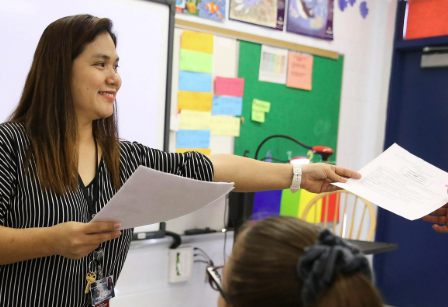While grades have long been the standard for evaluating academic success, they don’t always capture the full picture of a student’s growth. Measuring progress beyond grades involves recognizing learning as a journey—one that includes skill development, personal growth, and social-emotional learning. High school students benefit when schools and families use a more holistic approach to track progress, helping learners understand their strengths and identify meaningful areas for improvement.
One way to measure growth is through portfolio assessments. Students can compile a collection of their work over time, including essays, projects, presentations, and creative pieces. Reviewing these portfolios allows both students and teachers to see patterns in learning, effort, and improvement. Portfolios highlight how students apply knowledge, solve problems, and express ideas—not just how they score on tests. They also serve as a meaningful tool during student-led conferences or college applications, showing growth and capability over time.
Self-assessments also provide insight into learning progress. When students reflect on what they’ve learned, how they’ve tackled challenges, and what strategies helped them succeed, they become more aware of their growth. Tools such as learning journals, reflection prompts, and goal-setting exercises encourage this metacognition. Teachers can guide students in regularly reviewing their own progress, helping them build confidence and take responsibility for their learning. Encouraging students to set academic and personal development goals—and revisit them often—strengthens accountability and motivation.
Feedback from teachers, peers, and mentors offers valuable perspectives. Constructive feedback focuses on specific strengths and actionable steps for improvement. When shared consistently and thoughtfully, it becomes a powerful learning tool. Peer feedback, in particular, promotes collaborative learning and gives students insight into how their work impacts others. Rubrics with descriptive criteria also help students better understand expectations and take ownership of revisions.
Growth in soft skills—such as communication, teamwork, leadership, and perseverance—is another important indicator of progress. Participation in class discussions, contributions to group work, and involvement in extracurricular activities can show how students are developing these essential life skills. Teachers and advisors can use rubrics or observation checklists to track student engagement and character development. Reflection prompts like “How did I contribute to my group today?” or “What challenge did I overcome this week?” offer additional insights into social and emotional progress.
Project-based learning and performance tasks are rich opportunities to measure learning progress. These types of assessments challenge students to apply concepts in real-world contexts, requiring critical thinking and creativity. Evaluating these tasks based on rubrics that value process, collaboration, and originality allows for a broader understanding of achievement. Capstone projects, community service activities, or interdisciplinary presentations can be excellent demonstrations of applied learning.
Social-emotional growth can also be measured through check-ins, surveys, and conversations. As students learn to manage stress, resolve conflicts, and develop empathy, they are building skills that directly impact their academic and personal lives. School counselors and wellness staff can support this process by helping students set personal development goals and reflect on their progress. Tools like emotion journals or daily mood meters help students monitor their inner world and recognize emotional trends that may impact performance.
Digital tools and student portfolios can support holistic tracking of growth. Many platforms allow students to collect evidence of learning, reflect on milestones, and set targets for improvement. Teachers can leave comments, track participation, and monitor soft skills over time, painting a comprehensive picture of each learner’s development. These platforms also encourage students to become more involved in managing their academic journey.
Parent-teacher conferences offer another opportunity to go beyond grades. Instead of focusing solely on report cards, educators can share student work samples, anecdotal observations, and character growth. Involving students in these meetings as active participants or presenters further reinforces ownership of learning. Families can also support progress by celebrating effort, resilience, and positive habits at home.
Ultimately, measuring progress beyond grades fosters a growth mindset. It shifts the focus from short-term outcomes to long-term learning, encouraging students to see effort and resilience as key components of success. This approach helps learners recognize their own development, stay motivated, and prepare for challenges beyond school. When students, educators, and families embrace multiple measures of growth, they create a learning environment that supports well-rounded success.
By broadening the definition of success to include curiosity, creativity, responsibility, and personal reflection, we empower students to value themselves not just for what they score, but for who they are becoming. This deeper understanding of progress cultivates confidence, nurtures lifelong learning, and builds a foundation for purposeful futures in school and beyond.


